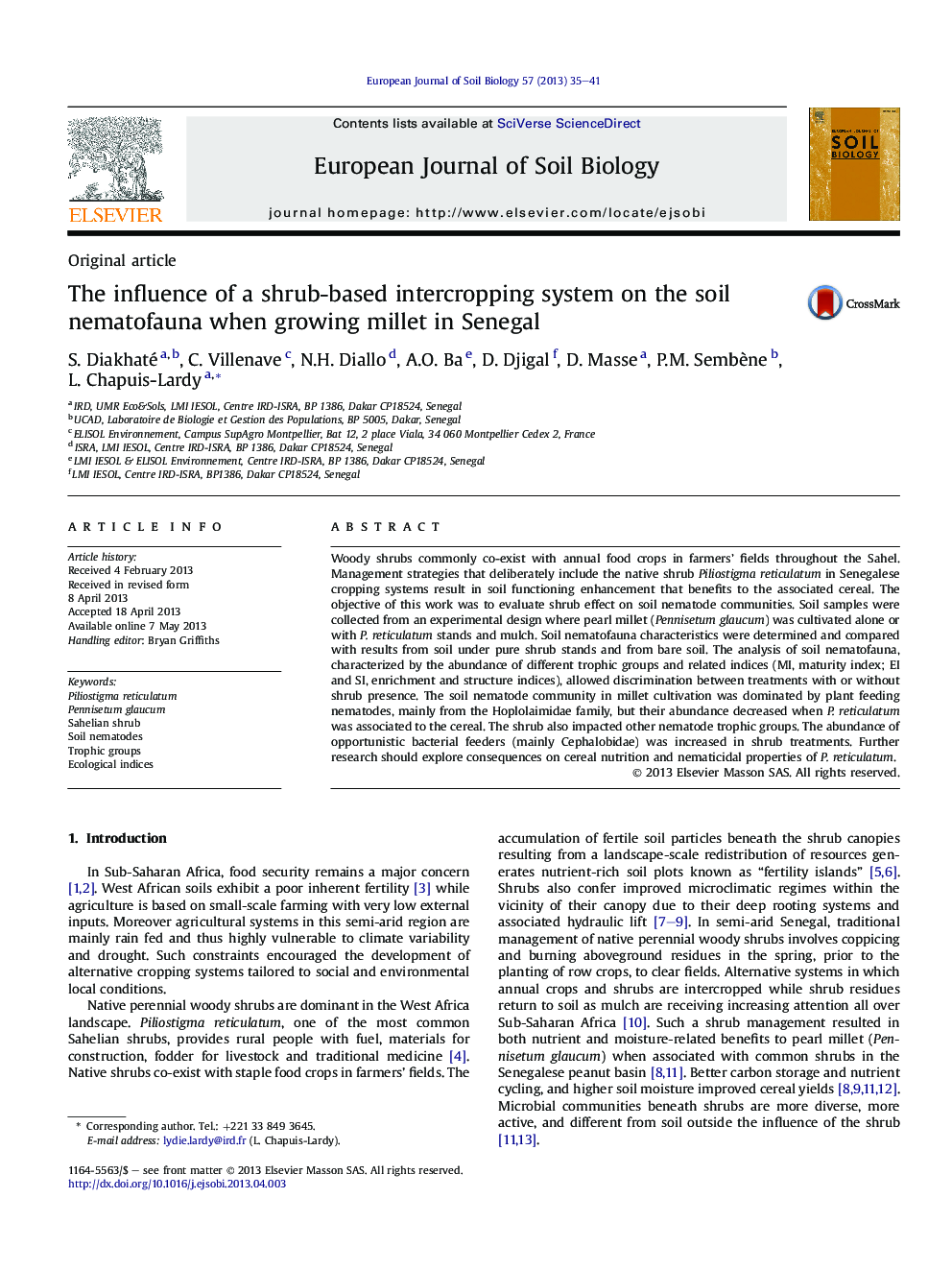| Article ID | Journal | Published Year | Pages | File Type |
|---|---|---|---|---|
| 6303047 | European Journal of Soil Biology | 2013 | 7 Pages |
Abstract
Woody shrubs commonly co-exist with annual food crops in farmers' fields throughout the Sahel. Management strategies that deliberately include the native shrub Piliostigma reticulatum in Senegalese cropping systems result in soil functioning enhancement that benefits to the associated cereal. The objective of this work was to evaluate shrub effect on soil nematode communities. Soil samples were collected from an experimental design where pearl millet (Pennisetum glaucum) was cultivated alone or with P. reticulatum stands and mulch. Soil nematofauna characteristics were determined and compared with results from soil under pure shrub stands and from bare soil. The analysis of soil nematofauna, characterized by the abundance of different trophic groups and related indices (MI, maturity index; EI and SI, enrichment and structure indices), allowed discrimination between treatments with or without shrub presence. The soil nematode community in millet cultivation was dominated by plant feeding nematodes, mainly from the Hoplolaimidae family, but their abundance decreased when P. reticulatum was associated to the cereal. The shrub also impacted other nematode trophic groups. The abundance of opportunistic bacterial feeders (mainly Cephalobidae) was increased in shrub treatments. Further research should explore consequences on cereal nutrition and nematicidal properties of P. reticulatum.
Related Topics
Life Sciences
Agricultural and Biological Sciences
Soil Science
Authors
S. Diakhaté, C. Villenave, N.H. Diallo, A.O. Ba, D. Djigal, D. Masse, P.M. Sembène, L. Chapuis-Lardy,
